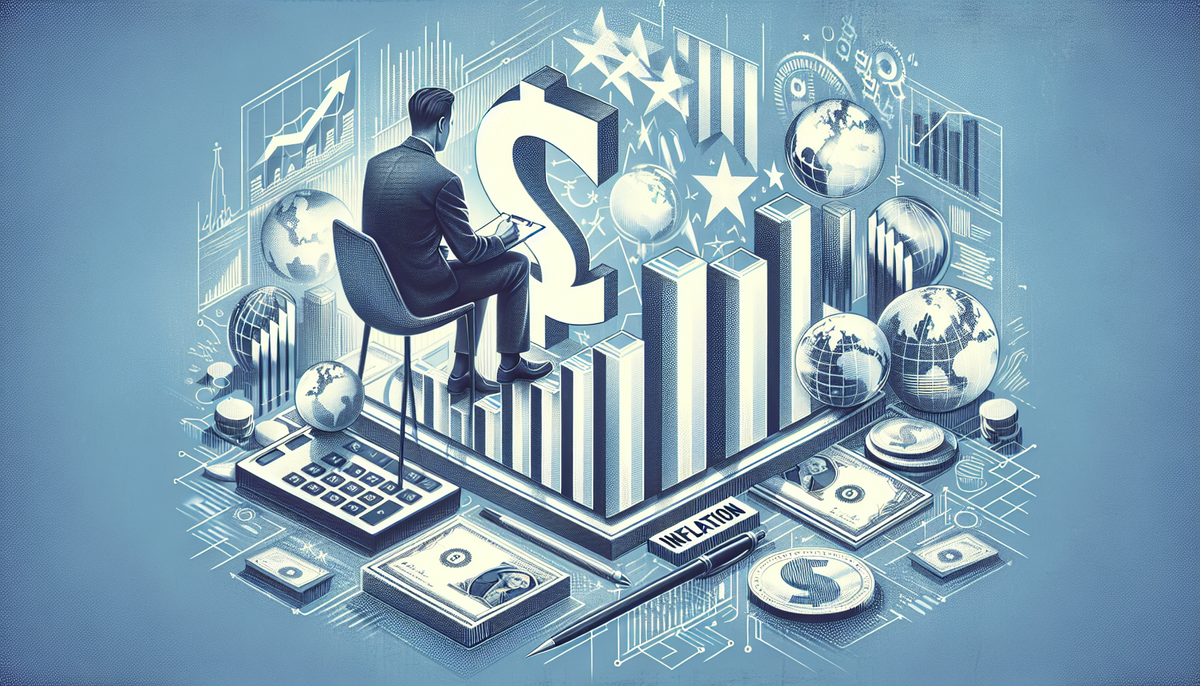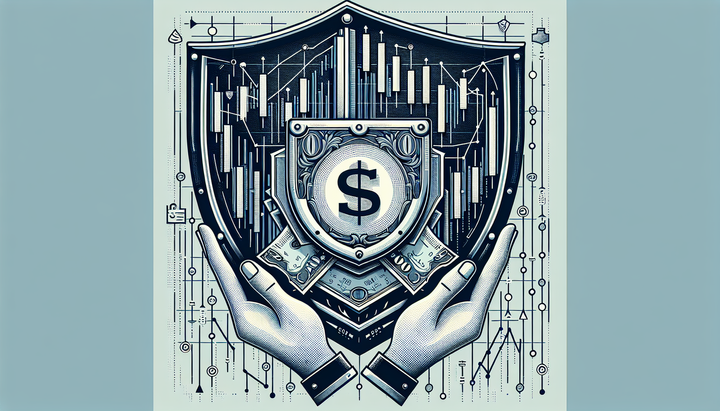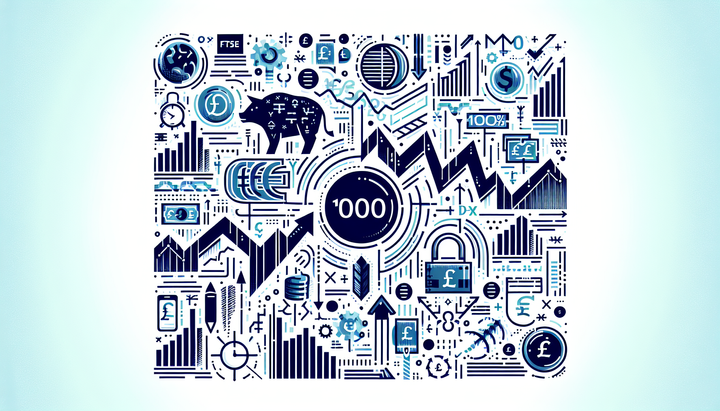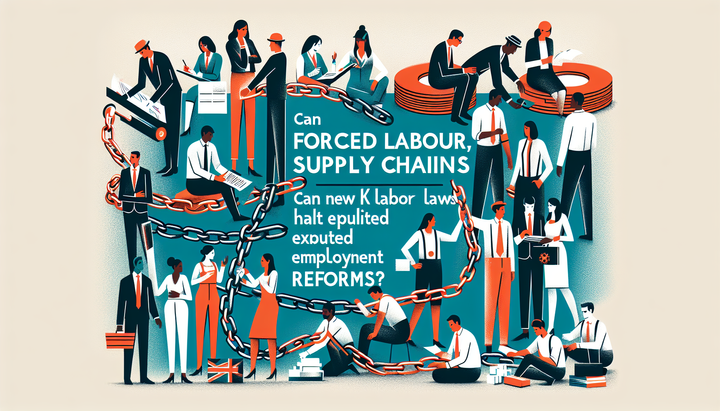Will Trump's Tariffs Spur Inflation? Fed Warns Prices

Will Trump's Tariffs Spur Inflation? Understanding Fed Warnings
The announcement of potential tariffs by the US administration has stirred up significant debate among economists, investors, and business leaders. The Federal Reserve has warned that these tariffs might increase consumer prices as firms pass higher input costs on to customers. In a climate of already persistent inflation and ongoing economic-policy uncertainty, this insight adds another layer of complexity to an already challenging monetary environment.
The Federal Reserve’s Perspective
Minutes from the Federal Reserve's recent January meeting revealed that several participants are deeply concerned about the ramifications of new government policies on the disinflation process. The central bank, already under pressure from a downtrend in its previous policies and public scrutiny, is now tasked with maintaining both stability and growth in an unpredictable economic landscape.
- Officials noted that business contacts in various districts had indicated the passing on of higher costs from potential tariffs.
- The minutes mentioned difficulty in distinguishing temporary inflation changes from persistent trends, especially with policy shifts looming.
- The consensus remains cautious as the Fed keeps its key interest rate unchanged in the short term.
This strategic pause in changing rates highlights the central bank's preference to rely on data-driven decisions rather than reacting hastily to political promises. The political debate, particularly President Trump’s suggestion of cutting interest rates to stimulate economic relief, has only intensified the scrutiny on the Fed’s commitment to its long-term goals.
Implications for US Consumers
Consumers could face a direct impact from the implementation of new tariffs. Higher input costs for businesses mean that prices for everyday goods and services might increase. This is particularly relevant for sectors sensitive to import costs and supply chain dynamics.
- Increased Production Costs: With tariffs in place, companies that depend on imported raw materials might see their operational costs rise, leading to adjusted pricing for end users.
- Consumer Price Pressure: Businesses may find it difficult to absorb these costs, resulting in a gradual transfer of expense to consumers at the checkout.
- Economic Confidence: Uncertainty surrounding policy changes may weaken consumer confidence, potentially leading to reduced spending and economic contraction.
The concerns expressed by the Fed underscore a broader economic anxiety. With market volatility and evolving trade policies, there is a strong need for strategic planning among both businesses and policymakers.
Business Strategies Amid Uncertainty
For companies navigating this challenging environment, several strategic responses are essential. Analyzing the potential impact of tariffs involves looking beyond immediate cost increases and considering long-term market adaptations. Here are some approaches businesses might adopt:
- Hedging Against Risks: Firms can explore financial instruments to hedge against price fluctuations caused by tariffs and inflation.
- Diversified Sourcing Strategies: By seeking alternative suppliers and diversifying markets, companies can reduce their reliance on tariff-affected imports.
- Investments in Technology: Automation and digital transformation can drive cost efficiencies, helping to counterbalance increased operational expenses.
- Focus on Innovation: Innovation in product design and service delivery can create pricing power, allowing companies to justify modest price increases without losing customers.
Each of these strategies involves challenges, such as initial capital outlays and restructuring supply chains. However, the longer-term benefits of enhanced resilience and improved competitive positioning make these investments attractive.
Global Economic Shifts and Market Trends
The discourse around tariffs today is intertwined with broader themes that are reshaping the global economy. Key trends include:
- Trade Policy Volatility: Shifts in trade policies not only impact US goods but also affect international supply chains, forcing global companies to reassess their market strategies.
- Digital Transformation: With rapid digitization across industries, businesses are leveraging technology to mitigate supply chain disruptions and improve operational efficiencies.
- Fiscal and Monetary Policy Coordination: The interplay between government fiscal policies and the Fed's monetary decisions remains critical. Their harmonious adjustment is vital for maintaining economic stability amid rising uncertainties.
Businesses are not the only ones adapting to these trends. Investors are closely monitoring policy signals and economic data to recalibrate their portfolios, while economic experts offer a range of scenarios about how these changes might play out in the long run.
Expert Insights and Real-World Case Studies
Several case studies illustrate how companies have historically navigated periods of economic uncertainty. For example, during previous instances of increased tariffs, businesses in the manufacturing and retail sectors adopted innovative supply chain management techniques and shifted to locally sourced materials. These adaptations not only helped maintain profit margins but also insulated some firms from the worst of the price hikes.
Experts emphasize that the key to weathering such economic storms lies in proactive strategy implementation. According to many analysts:
- Companies that diversified their supply chains were more resilient to external shocks.
- Investments in technology and innovation created long-term savings that offset short-term cost increases.
- A flexible business model allowed for quicker adaptation to regulatory and market changes.
The complex dynamics of tariff policies, inflation trends, and monetary decisions make it essential for businesses to stay informed and agile. As the Fed continues to focus on data-driven decisions, the market is likely to experience shifts that, while initially disruptive, may result in more robust corporate strategies and market realignments over time.
Challenges Ahead: Balancing Short-Term Impacts with Long-Term Strategy
The convergence of governmental policy changes and economic uncertainty presents several challenges:
- Price Stability vs. Market Volatility: The immediate concern is balancing the sharp increases in consumer prices against long-term stability. This is particularly tricky for sectors that rely heavily on imported materials.
- Maintaining Consumer Trust: As businesses pass higher costs onto consumers, maintaining trust and competitive pricing becomes crucial. Transparent communication and value addition are key strategies.
- Policy Uncertainty: The ongoing debates and potential alterations to trade, immigration, and regulatory policies mean that businesses must prepare for a wide range of scenarios.
Despite these challenges, the current economic landscape also presents opportunities. Firms that succeed in managing these complexities could emerge as leaders in innovation and efficiency. This competitive edge, in turn, may drive broader market benefits, including improved consumer confidence and a more resilient economy.
How Should Investors React?
Investors must navigate this uncertain environment by re-evaluating their portfolios and paying close attention to market signals. Key strategies include:
- Monitoring central bank statements and legislative developments for early signals of policy shifts.
- Diversifying investments to hedge against sector-specific risks, especially in industries heavily influenced by trade policies.
- Focusing on companies with agile management practices and a strong track record of adapting to economic challenges.
Expert advice generally suggests that while short-term market fluctuations can be unsettling, a long-term perspective coupled with diversified investments is crucial for mitigating risk. Investors who remain vigilant and adaptable are more likely to navigate the choppy waters ahead and identify opportunities as the market adjusts.
Conclusion: Navigating Uncertainty with Strategic Agility
The potential implementation of new tariffs by President Trump has amplified the already complex discussions surrounding inflation and global market trends. With the Federal Reserve highlighting the risk of passing on higher input costs to consumers, businesses, investors, and policymakers find themselves at a crossroads.
Adopting adaptive strategies, investing in technology, and maintaining a diversified approach are practices that could help ease the transition through this period of economic uncertainty. While the immediate effects may manifest as higher prices and market volatility, the long-term outcome could see a more resilient, innovative, and agile corporate environment that is better equipped to handle the challenges of an ever-evolving global economy.
The insights shared in this article underscore the importance of informed, proactive decision-making. As the economic landscape continues to shift, staying abreast of policy changes, market trends, and expert analyses will be essential for successfully navigating the future of business and finance.



Comments ()